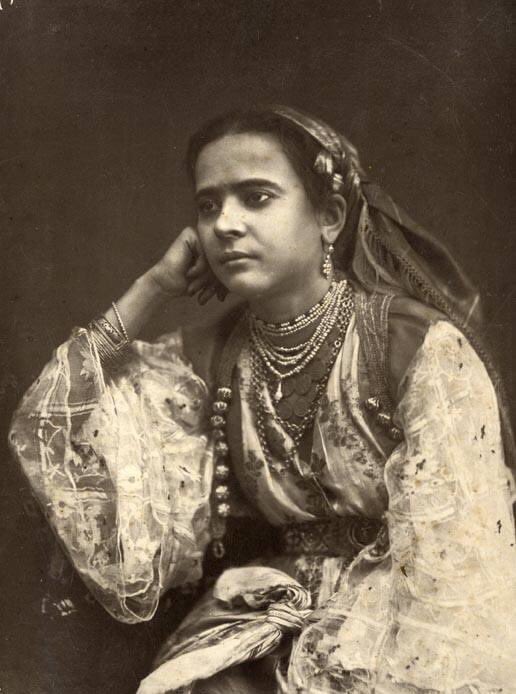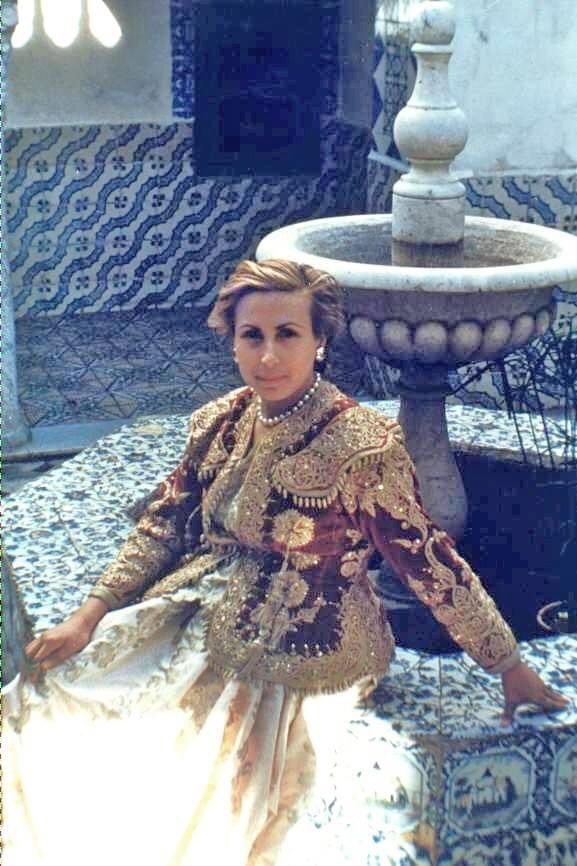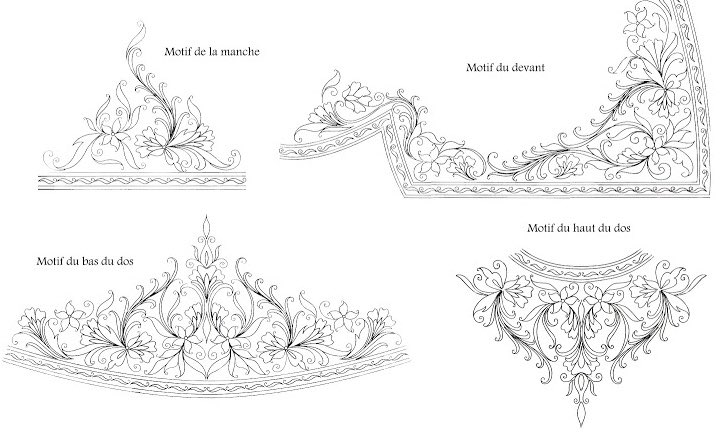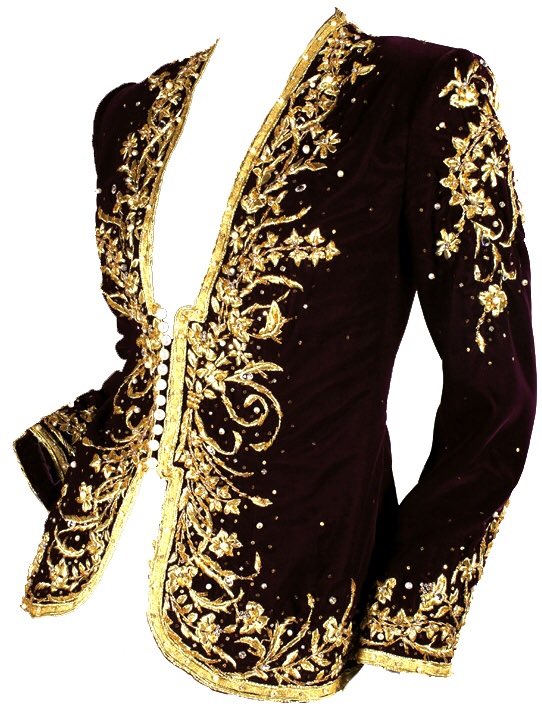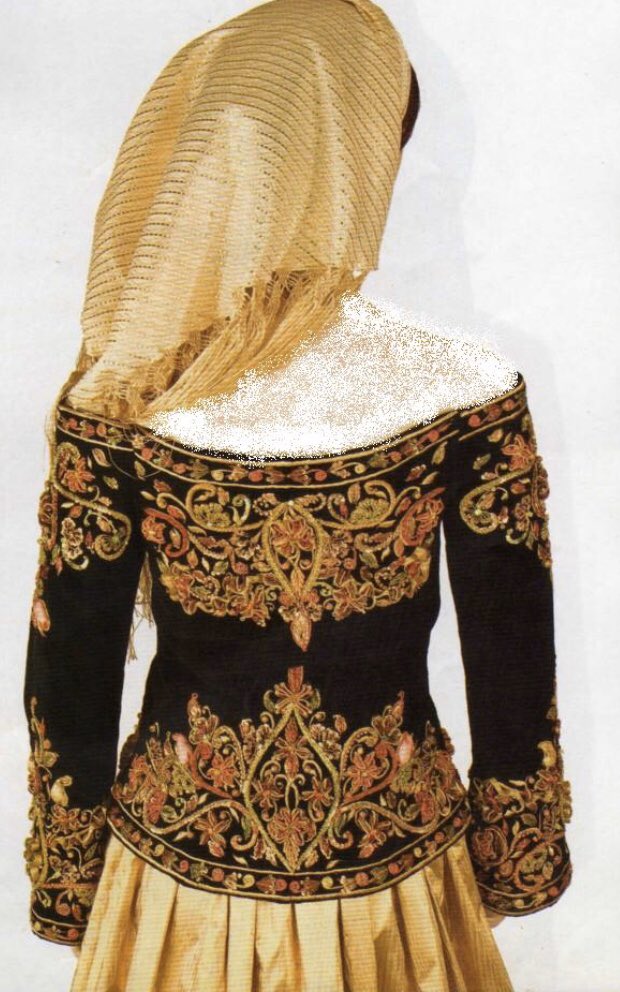Traditional #algéroise attire.
In the 17/18th centuries, women wore a gnidra (الڤنيدرة - lacy chemisette) and would add layers during cooler seasons.
In the 17/18th centuries, women wore a gnidra (الڤنيدرة - lacy chemisette) and would add layers during cooler seasons.
The karaku (كراكو) was worn by the Algéroise aristocracy. The top jacket was produced in very expensive fabrics (often velvet) embroidered using fetla (فتلة) & mejbud (مجبود) techniques in gold or silver thread.
The fetla technique is to pierce the fabric all at once in one place, and then embroider the same thread until you finish at your initial point. Examples of traditional colors of the karaku: burgundy, mauve, royal blue. Some designs:
Another garment of the elites: قفطان الاستربق. For the caftan, some wore a serma (السرمة) headdress (gold for Muslim women and silver for Jewish women) seen on the left. Underneath the caftan would go the gnidra, finished off with a belt called 7zam el 3rbi (حزام العربي).
Many variations. In the first picture you see the قفطان المنصورية with the traditional bligha (بليغة). Second picture قفطان المحيرزات. Third picture another caftan ensemble.
Karaku sha3ra (كراكو شعرة) is a popular model, it has a mixture of s9ali (صقلي) and pearl embroidery done in both Algiers & Tlemcen, and these designs are also found on modern 9wiyet (قويط) or badrun (البدرون) — made out of tafta/التفتة, satin, and muslin.
A technique specific to Algiers is called nujum u kentir (النجوم و الكنتير). Today, the karaku symbolizes the identity of algéroise women.

 Read on Twitter
Read on Twitter
